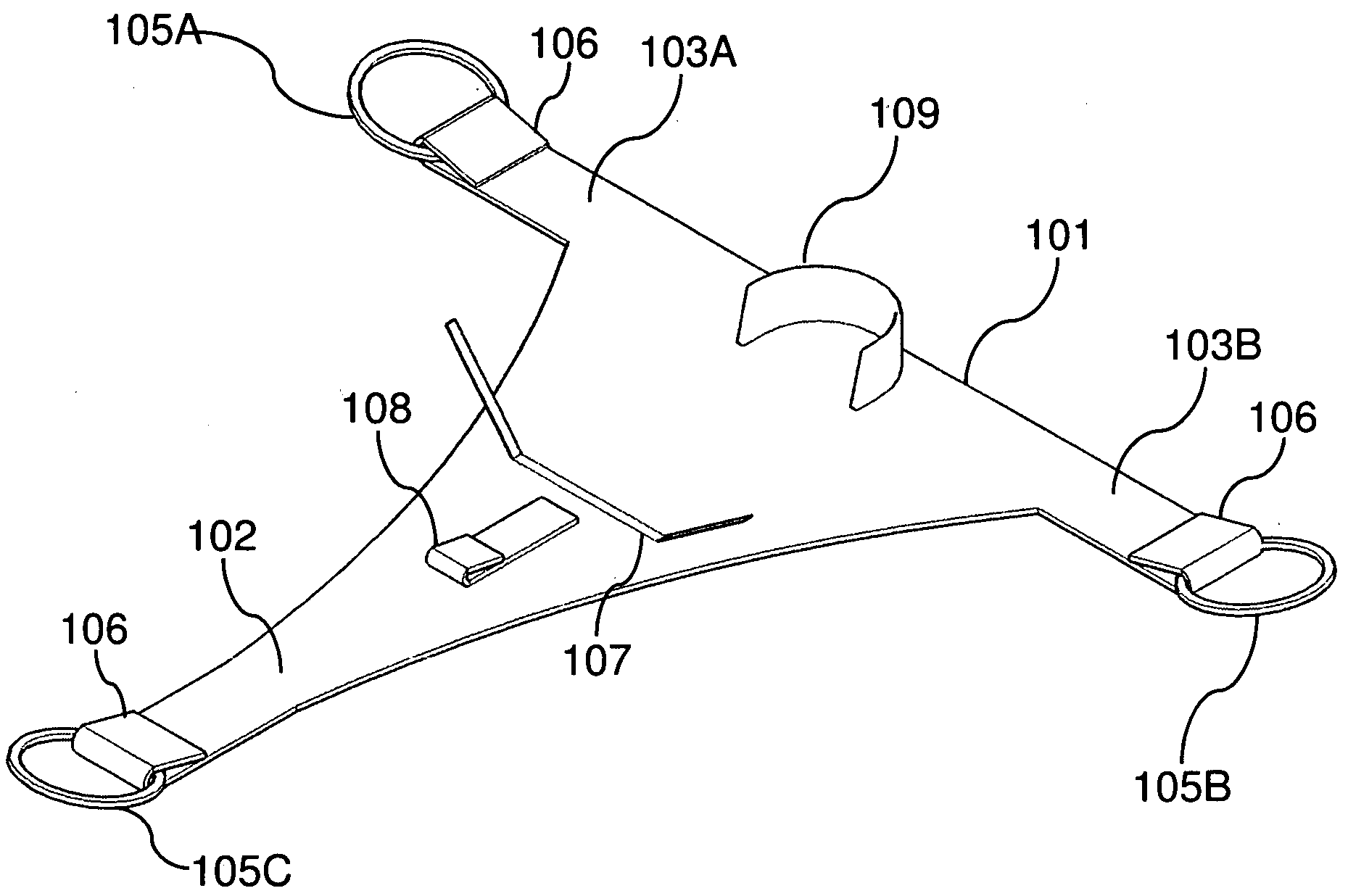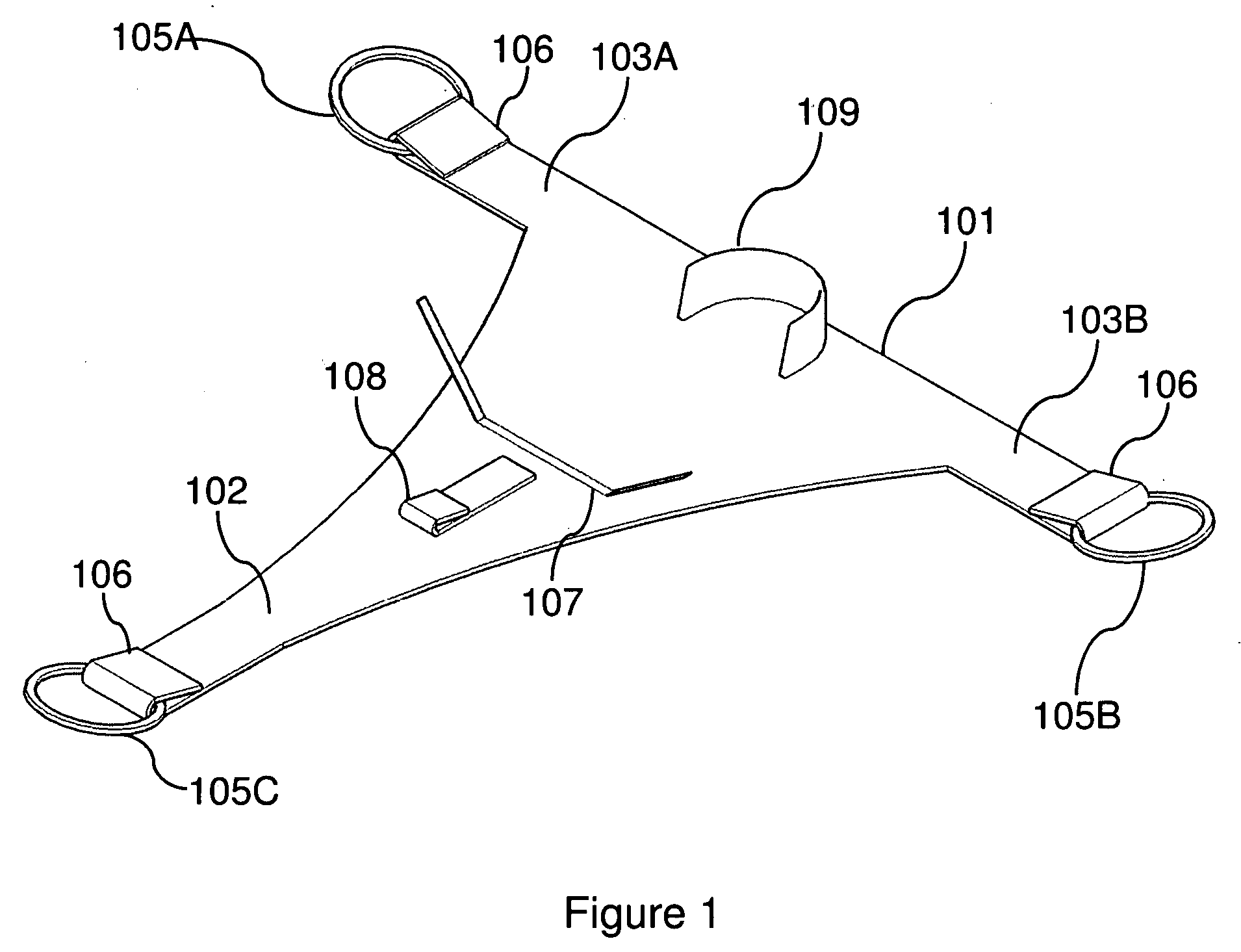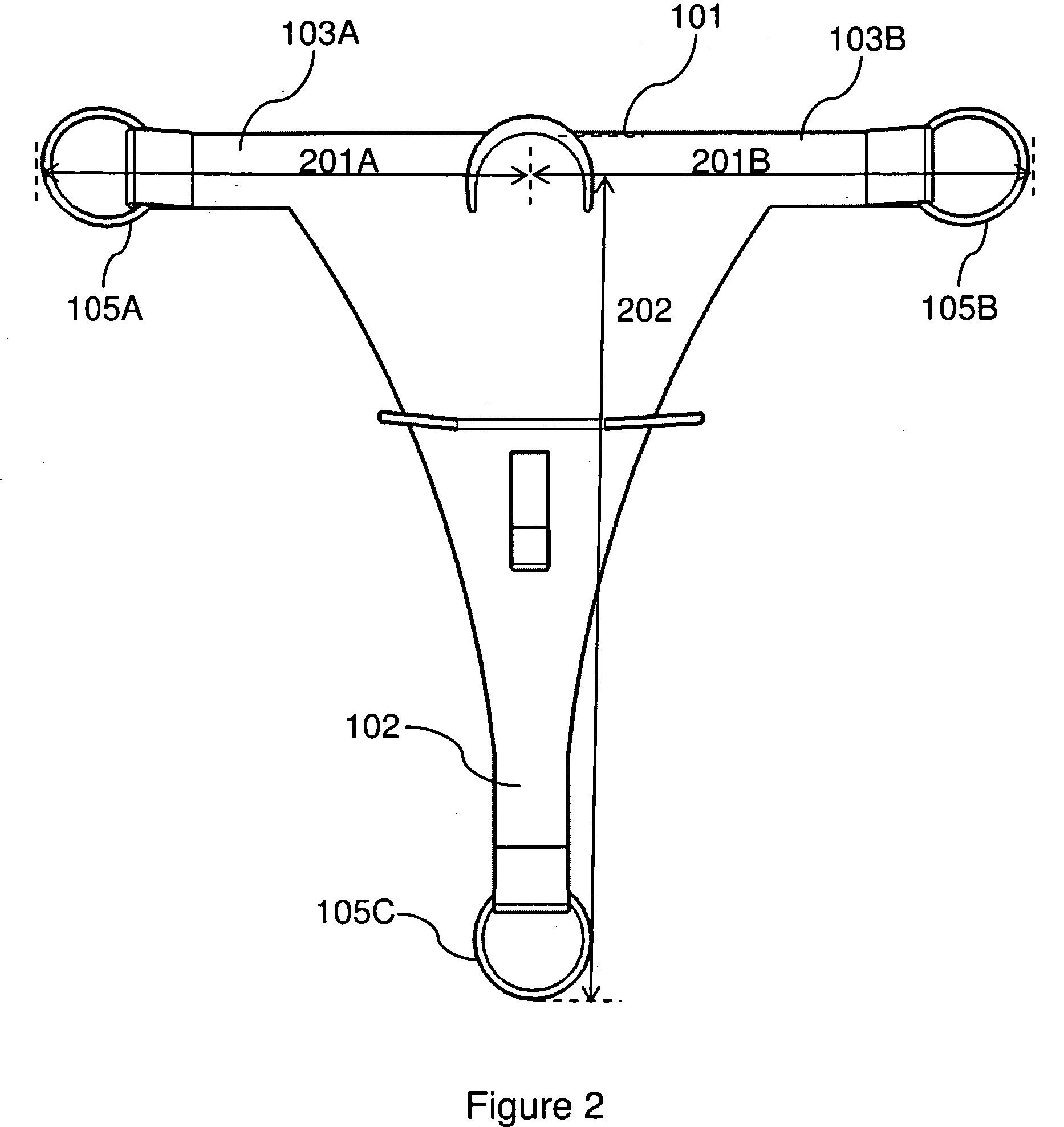Modular infant carrier apparatus and method
a module and infant carrier technology, applied in the field of infant carriers, can solve the problems of not being able to separate the infant from the adult, not being able to carry an infant in a sling at all, and being unsafe for some common household tasks
- Summary
- Abstract
- Description
- Claims
- Application Information
AI Technical Summary
Benefits of technology
Problems solved by technology
Method used
Image
Examples
Embodiment Construction
[0032]The invention is illustrated by the following detailed description of a number of embodiments and aspects of the invention.
[0033]Referring first to FIG. 1, one embodiment of sling 101 of the invention is depicted. In the preferred embodiment, sling 101 is a single piece of fabric. In other embodiments, sling 101 may be separate pieces of fabric sewn, glued, clipped, or otherwise attached to one another. The fabric may be any fabric capable of supporting the weight of an infant without tearing. In the preferred embodiment, the sling is made of a single piece of woven cotton. Woven cotton is advantageous because it is strong, lightweight, washable, and not prone to stretching. In other embodiments, the sling is made of any type of cotton, jersey, flannel, wool, synthetic fabric, any blend of fabrics, or combinations of any of these fabrics.
[0034]Sling 101 includes a tail portion 102 and two arm portions 103A and 103B. In the embodiment depicted in FIG. 1, arm portions 103A-B are...
PUM
 Login to View More
Login to View More Abstract
Description
Claims
Application Information
 Login to View More
Login to View More - R&D
- Intellectual Property
- Life Sciences
- Materials
- Tech Scout
- Unparalleled Data Quality
- Higher Quality Content
- 60% Fewer Hallucinations
Browse by: Latest US Patents, China's latest patents, Technical Efficacy Thesaurus, Application Domain, Technology Topic, Popular Technical Reports.
© 2025 PatSnap. All rights reserved.Legal|Privacy policy|Modern Slavery Act Transparency Statement|Sitemap|About US| Contact US: help@patsnap.com



